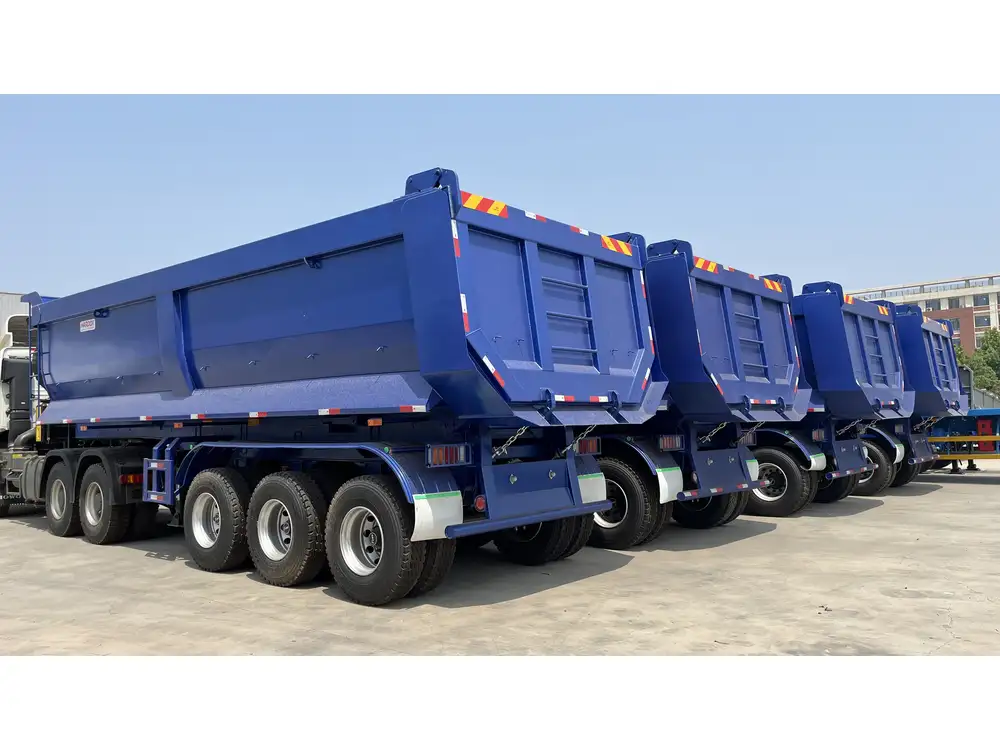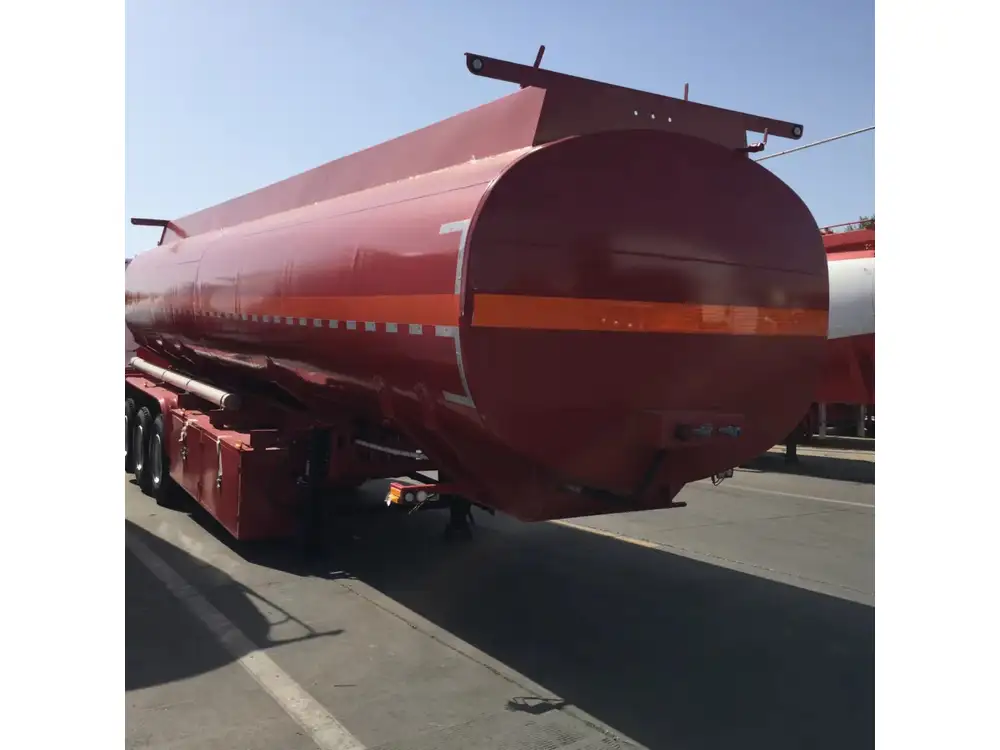When it comes to operating semi-trailers, understanding the lighting requirements is paramount to ensuring safety and compliance with legal standards. With the transportation industry growing and regulations becoming more stringent, we dive deep into what lights are required on a semi-trailer, outlining not just the necessities but also the best practices for optimal visibility on the road.
Understanding the Importance of Trailer Lights
The lighting on semi-trailers serves multiple critical functions:
- Safety: Properly functioning lights enhance visibility, reducing the likelihood of accidents.
- Compliance: Adhering to local and federal regulations is non-negotiable for commercial transportation.
- Visibility: Clear illumination helps to avoid potential collisions, especially in low-light conditions.
Legal Requirements for Semi-Trailer Lighting

Federal Regulations Overview
The Federal Motor Carrier Safety Administration (FMCSA) sets forth regulations for lighting on trailers, including the following key requirements:
- Brake Lights: Every semi-trailer must have functioning brake lights that are activated when the brakes are applied.
- Turn Signals: Clear and distinct turn signals indicate the intended direction of travel.
- Tail Lights: Tail lights must be visible from a specific distance and visibility angle to comply with regulations.
- Reflective Tape: In addition to lights, reflective tape must be strategically placed to enhance visibility, especially during the night.
State-Specific Variations
While federal regulations provide a general framework, each state may impose additional lighting requirements. It is crucial to check local laws to ensure compliance with:
- Number of lights
- Color of lights
- Placement and visibility standards
Breakdown of Required Lights
Here’s a structured representation detailing the specific types of lights required on semi-trailers:
| Type of Light | Description & Purpose | Regulatory Standard |
|---|---|---|
| Tail Lights | Illuminate the rear of the trailer. | Must be visible from at least 500 feet. |
| Brake Lights | Signal when brakes are applied. | Must activate when brakes are pressed. |
| Turn Signal Lights | Indicate turning intentions. | Must flash in the corresponding direction when engaged. |
| Side Marker Lights | Enhance side visibility during driving. | Required on the left and right sides, visible from 500 feet. |
| Rear Identification Lights | Mark the vehicle’s width. | Required for trailers over 80 inches wide. |
| Reflective Tape | Passive visibility improvement. | Must be affixed to the sides and rear. |

Tail Lights
Tail lights are non-negotiable, providing essential illumination at the back of the trailer. They notify other drivers of the trailer’s presence and are crucial for safety, especially at dawn or dusk. Typically, tail lights should emit a red glow that is easily observable from a distance of 500 feet.
Brake Lights
Brake lights are critical in conveying to drivers behind that a semi-trailer is slowing down or stopping. A malfunction in this system can lead to severe accidents, underscoring the necessity for regular maintenance checks.
Turn Signal Lights
Turn signals should be prominently located on the rear and sides of the trailer. They must clearly communicate direction changes to other road users, significantly minimizing blind spots during lane changes or turns.

Side Marker Lights
These lights are vital for revealing the trailer’s length and width, especially in low visibility conditions. They help prevent accidents during both day and night, outlining the edges of the trailer clearly.
Rear Identification Lights
For semi-trailers wider than 80 inches, rear identification lights are essential in marking vehicle breadth. This requirement exists to better inform other drivers of the trailer’s dimensions, especially on busy highways.
Reflective Tape
In addition to lights, reflective tape is a vital component of trailer visibility. This passive lighting method reflects headlights from oncoming vehicles, enhancing visibility during the night and under poor weather conditions.

Best Practices for Maintaining Trailer Lighting
Regular Inspections
To ensure compliance and safety, regular inspections of all lighting components are essential. Key areas to focus on include:
- Checking for burnt-out bulbs
- Inspecting wiring for any signs of wear or damage
- Ensuring that all lights are properly aligned and shining in the correct direction
Immediate Repairs
Any malfunctioning light should be repaired immediately. Delays can lead to unsafe driving conditions and possible penalties from law enforcement.

Upgrading to LED Lights
LED lights have become the standard in modern semi-trailer lighting for various reasons. Their advantages include:
- Longevity: LEDs last significantly longer than traditional bulbs, reducing replacement frequency.
- Brightness: LED lights are typically brighter, enhancing visibility.
- Energy Efficiency: They consume less power, which can be beneficial for long-haul drivers who spend extended periods on the road.
Legal Compliance Checks
Stay updated on local and federal regulations about lighting requirements. This proactive approach helps mitigate any risks associated with non-compliance, ensuring that every journey is safe and within legal parameters.
How to Choose the Right Lighting for Your Semi-Trailer

Assessing Needs Based on Trailer Use
Depending on how often the semi-trailer is used, the lighting requirements might vary:
- Frequent Long-Distance Travel: Invest in high-quality, energy-efficient LED lights.
- Short, Local Runs: While compliance is still necessary, less intensive lighting might suffice.
Consulting with Professionals
For specific lighting solutions tailored to your trailer’s needs, consulting with lighting professionals or vehicle safety experts can be invaluable. They can provide insights into the latest technologies, compliance, and best practices.
Conclusion
Understanding the lighting requirements for semi-trailers is not merely about compliance; it is a crucial aspect of safety in the transportation industry. By ensuring that your semi-trailer is equipped with the appropriate lights and maintaining them diligently, you not only comply with regulations but also contribute to the safety of all road users. As the trucking industry becomes increasingly regulated, the need for proper lighting systems cannot be overstated. Whether you are a truck manufacturer, owner-operator, or fleet manager, prioritizing lighting is one of the simplest yet most effective ways to enhance road safety.
Ultimately, the responsibility lies in maintaining strong visibility and ensuring all components are functional and compliant. As we explore further innovations in trailer lighting, staying informed will keep you ahead in the industry, ensuring adherence to standards and enhancing overall driver safety.



